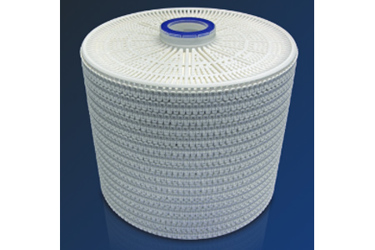SUPRAdisc II™ Depth Filter Modules

The SUPRAdisc II™ Modules eliminate the disadvantages of classic stacked disc modules by offering increased capacity, reliability, handling advantages, and robustness, which satisfies customer needs and requirements for a higher-performing product.
Due to the relative high dirt-holding capacity and filtration performance of filter sheet-based products, stacked disc modules provided an optimal and cost-effective solution for handling food and beverage fluids. However, classic stacked disc modules represent first-generation module design, but they have performance disadvantages. Classic stacked disc modules have inherent design limitations including exposed depth media, Individual cell proximity to one another is very close, Classic stacked disc designs do not withstand any back pressure, and Classic stacked disc modules are sensitive to high-temperature operations.
SUPRAdisc II™ modules offer a multitude of benefits that overcome the disadvantages of the classical stacked disc design. These benefits result in important cost savings.
- Longer onstream life, due to highest utilization of the filter sheet area, no blinding of filter surfaces, open design of the separators, optimized drainage, and distribution of incoming fluid to each filter sheet via the outside separator
- Repeated use is possible due to regenerability of the modules with backflushing
- Higher operational security, due to resilience against vacuum or back pressure shocks, and no cell or module deformation from hot operation or sanitization and steaming
- Better handling before and after operation, due to robust design and protection of filter media from exposure and damage
- Higher yields, as rest filtration in reverse flow mode is possible
- High filtrate quality, without chance of bypass, due to module design and use of proven and reliable filter media recipes
- Higher microbial safety due to closed design
- Significant reduction in oxygen uptake due to minimized system volume and closed housing design
